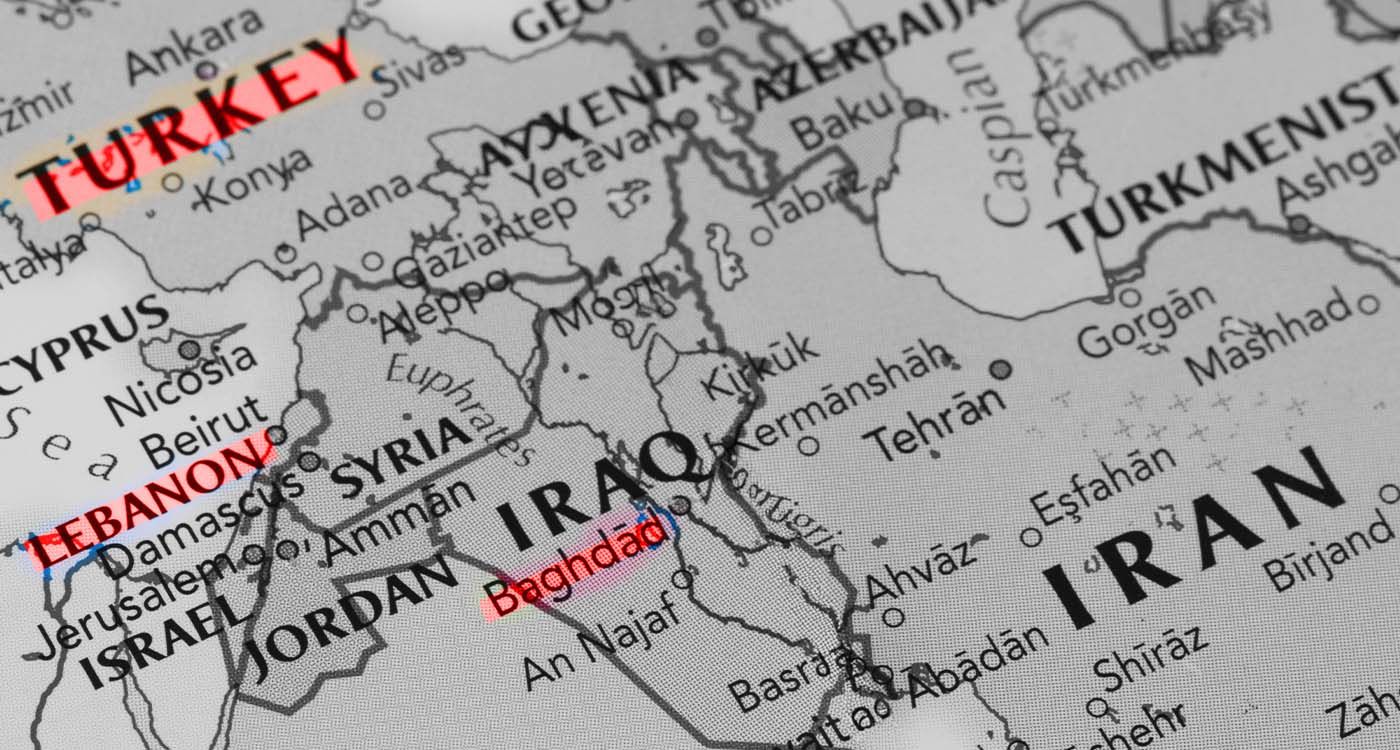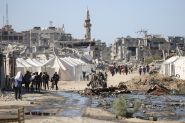- Home
- Arab World
- The Day the Middle East Reset Itself

©This is Beirut
On the morning of June 22, 2025, the world woke up to the smoldering ruins of Iran’s most fortified nuclear facilities – Fordow, Natanz and Isfahan. The strikes, led by Israel and backed silently but unmistakably by the United States, were not a surprise to those watching closely. This wasn’t a spontaneous act of self-defense. It was the culmination of a shadow war that’s been simmering for over two decades, now brought into the open in a calculated, almost ritualistic fashion.
The assault was surgical, symbolic and political. Dozens of senior Islamic Revolutionary Guard Corps (IRGC) officers and nuclear scientists were killed. Missile defense systems were bypassed using American stealth bombers, likely B-2s, and cyber warfare played a parallel role. And just like that, Iran’s dream of becoming a nuclear-armed state was knocked back by at least five years – possibly more.
Back in the White House, Donald Trump played the part of a reluctant firefighter – swooping in after the blaze to broker a ceasefire on June 23, claiming credit for “ending a 12-day war” that he never officially entered. But the reality? His administration helped light the match.
Iran’s retaliation was fierce but limited. Hundreds of missiles and drones were launched, some reaching Israeli cities, many intercepted. But the regime’s core military strategy – deterrence through escalation – is now exposed as hollow. For years, Tehran relied on ambiguity and regional proxy chaos to dissuade direct confrontation. That strategy died the moment Fordow was turned into a crater.
This wasn’t just a military setback – it was a credibility collapse. Iran’s inability to protect its nuclear crown jewels shattered the image it worked so hard to build: that it could strike and survive, that its reach through Hezbollah, the Houthis and the Iraqi militias made it untouchable. It’s now more touchable than ever.
Benjamin Netanyahu, long ridiculed for his “boy who cried wolf” rhetoric on Iran, didn’t just neutralize a nuclear threat; he reminded the region that Israel will act alone if needed – and do so effectively. The strikes showcased not only military supremacy but intelligence depth, geopolitical boldness and a willingness to absorb backlash.
Israel’s enemies took note – and not just in Tehran. Hezbollah is reeling, having seen its communication networks exposed and its leadership quietly decimated in the weeks leading up to the main strike. Syria’s skies have been buzzing with drones and jets. Even Turkey, fresh off a nationalist pivot, is now recalibrating its regional posture.
This conflict did not happen in a vacuum. It was the product of a shifting global order.
The US Is Back – but Transactional
Trump’s second term is less about global leadership and more about controlled chaos. He wants wins, not wars. But he also wants dominance. By supporting Israel’s strike from the shadows, he scored a double victory: humiliating Iran and avoiding US casualties.
Russia Is Preoccupied, Not Absent
The Ukraine war has drained Russian bandwidth. While Moscow and Tehran are strategic partners, Putin didn’t lift a finger to protect Iran. That silence was deafening – and noticed in Damascus and Baghdad.
China Is Watching, Not Acting (Yet)
Beijing issued its usual calls for restraint, but behind closed doors, it’s recalculating its investments and oil flow strategies. The Strait of Hormuz remains open – for now – but Chinese planners are already thinking about alternative routes and fallback supply lines.
The Gulf Is Quiet – Too Quiet
Saudi Arabia, the United Arab Emirates and Qatar have stayed largely silent. Not because they’re neutral, but because silence benefits them. Iran’s regional clout just took a body blow, and none of the Gulf monarchies are mourning it. In fact, this may accelerate quiet normalization moves with Israel under the table.
What Happens Next: Three Scenarios
Cold Containment: Iran retreats to rebuild. It avoids a full-scale war and leans more on proxies, cyberwarfare and asymmetric pressure – especially in Iraq and Lebanon. Expect renewed chaos in Baghdad and more “unclaimed” rocket attacks in northern Israel.
Proxy Firestorm: Hezbollah may be dragged into a conflict it doesn’t want but can’t avoid. If it opens a northern front, Israel will hit Lebanon hard – and this time, without restraint. The Lebanese state, already a failed shell, could collapse entirely.
Internal Implosion in Tehran: The regime is shaken. Economic collapse, humiliation and mass funerals for IRGC martyrs could spark protests that make 2019 look like a warm-up. The Revolutionary Guard may crack down on them – but cracks within the Guard itself may start to show.
The Final Word: The Illusion of Stability Has Shattered
This war was never just about nuclear centrifuges. It was about who gets to write the rules in the Middle East. The old Pax Americana is dead. What’s emerging is a more chaotic, more brutal order where alliances are tactical, red lines are blurred, and no regime – not even Tehran’s – is too sacred to fall.
This is not the end of conflict. It’s just the end of pretending there won’t be one.
And the next flashpoint? It may not be Tehran. It may be Beirut, Baghdad – or even Ankara.
Stay tuned. The chessboard just got flipped.
Read more





Comments